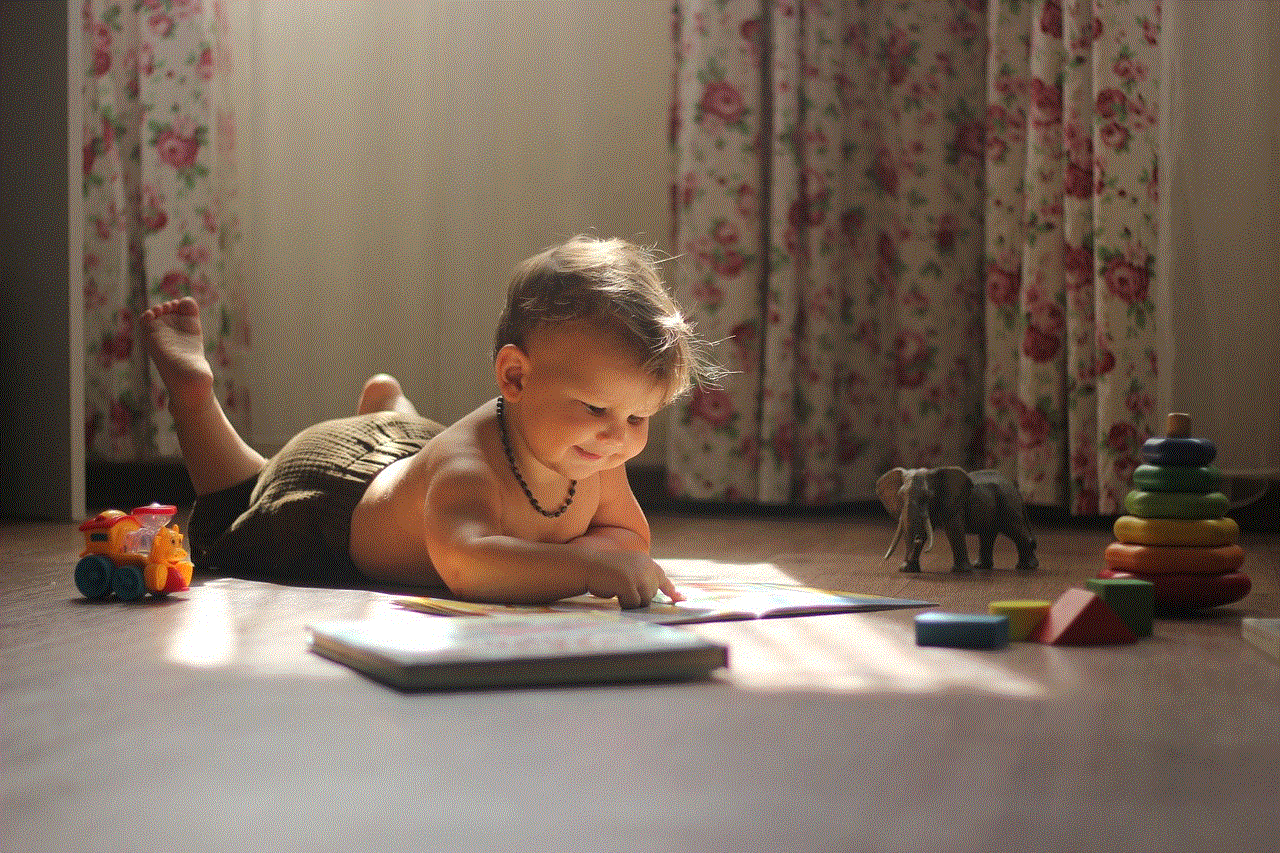what is a gabb phone
In today’s era of constantly evolving technology, there has been a surge in the demand for smartphones. With new models and features being released every other day, it can be overwhelming for consumers to keep up with the latest trends. Despite this, there is still a market for simpler and more basic phones that focus on the essentials of communication. One such type of phone is the Gabb phone. But what exactly is a Gabb phone and how does it differ from other smartphones? In this article, we will delve into the world of Gabb phones and explore their features, uses, and benefits.
Gabb phones, also known as Gabb Wireless phones, are a type of mobile device that is specifically designed for kids and teenagers. They are created with the intention of providing a safe and healthy digital experience for children, without the distractions and potential dangers of a regular smartphone. Gabb phones come with a basic set of features such as calling, texting, and a few pre-installed apps, but they lack access to social media, internet browsing, and app stores. This means that children are not exposed to the potential negative effects of excessive screen time and social media usage.
Gabb phones were first introduced in 2018 by the company Gabb Wireless, with the aim of addressing the growing concerns of parents regarding their children’s smartphone usage. With the rise of cyberbullying, online predators, and screen addiction, parents are becoming more cautious about when and how their children use smartphones. This is where Gabb phones come in, offering a solution that bridges the gap between traditional flip phones and modern smartphones.
One of the key features of Gabb phones is that they come with a built-in GPS tracker. This allows parents to keep an eye on their child’s location at all times, providing them with peace of mind and a sense of security. Additionally, Gabb phones also come with parental controls that allow parents to set restrictions on usage, such as screen time limits and call/text permissions. This gives parents the ability to customize their child’s phone usage according to their own rules and preferences.
Gabb phones also have a feature called “Gabb plans” which are specifically designed for kids. These plans offer unlimited talk and text, as well as access to a few pre-installed apps such as a calculator, calendar, and camera. This means that children can stay connected with their parents and friends without the distractions of social media or internet access. Gabb plans are also more affordable compared to regular smartphone plans, making them a budget-friendly option for parents.
One of the biggest concerns for parents when it comes to smartphones is the potential exposure to inappropriate content. With Gabb phones, parents can rest assured that their children are not exposed to such content, as all websites and apps are pre-approved by Gabb Wireless. This not only ensures a safe online experience for children but also eliminates the need for parents to constantly monitor their child’s internet usage.
Another benefit of Gabb phones is their durability. As they are designed for kids and teenagers, Gabb phones are built to withstand drops and spills. This means that parents do not have to worry about constantly replacing their child’s phone due to accidental damage. Moreover, Gabb phones have a long battery life and come with a protective case, making them a practical choice for parents who want a reliable and sturdy phone for their child.
In terms of design, Gabb phones have a simple and sleek look. They come in a range of colors such as black, blue, and pink, catering to the preferences of both boys and girls. The user interface is also easy to navigate, making it user-friendly for children who are not yet familiar with smartphones. This simplicity in design and functionality is a key factor that sets Gabb phones apart from other smartphones in the market.
While Gabb phones are primarily marketed towards kids and teenagers, they can also be a suitable option for adults who want a basic phone for communication purposes. For those who do not need or want access to social media, internet browsing, or a plethora of apps, Gabb phones offer a more affordable and practical alternative to regular smartphones. They also make a great backup phone for emergencies or for those who prefer a more minimalistic approach to technology.
In conclusion, Gabb phones are a unique and innovative solution to the growing concerns of parents regarding their children’s smartphone usage. With features such as parental controls, GPS tracking, and limited access to apps, Gabb phones provide a safe and healthy digital experience for kids. They are also durable, affordable, and user-friendly, making them a practical choice for both kids and adults. Whether you are a parent looking for a safe phone for your child or an adult wanting a basic communication device, Gabb phones offer a refreshing alternative in the ever-expanding world of smartphones.
passive aggressive parents
Passive aggressive parenting is a form of parenting that involves indirect and subtle behavior, often characterized by manipulation, criticism, and control. It is a complex and damaging style of parenting that can have long-lasting effects on a child’s emotional and mental well-being. This article will explore the concept of passive aggressive parenting, its characteristics, impacts, and provide tips for dealing with passive aggressive parents.
What is Passive Aggressive Parenting?
Passive aggressive parenting is a style of parenting that is characterized by a lack of direct communication and expressing hidden hostility and anger. It involves using subtle and indirect methods to manipulate and control children. Parents who use this style of parenting often appear passive and avoid confrontations, but they are actually expressing their anger and frustration in covert ways.
Passive aggressive parents may use sarcasm, guilt, and shame to get their children to comply with their wishes. They may also use nonverbal cues such as sighs, eye rolls, and body language to express their disapproval. This style of parenting can be confusing for children as they may not understand the underlying hostility and may feel like they are constantly walking on eggshells to avoid their parent’s anger.
Characteristics of Passive Aggressive Parents
1. Lack of Direct Communication: Passive aggressive parents struggle with expressing their needs and emotions directly. They may not clearly state their expectations and instead resort to subtle ways of communicating, such as giving the silent treatment.
2. Manipulative Behavior: Passive aggressive parents may use manipulation to get their children to do what they want. This can include using guilt, shame, or making their children feel responsible for their emotions.
3. Inconsistency: Passive aggressive parents can be unpredictable in their behavior. They may alternate between being overly affectionate and cold and distant, leaving their children confused and unsure of how to behave.
4. Refusal to Take Responsibility: Rather than taking responsibility for their actions and emotions, passive aggressive parents may blame others or make excuses for their behavior. This can create a toxic and unhealthy dynamic in the parent-child relationship.
5. Difficulty in Expressing Emotions: Passive aggressive parents may struggle with expressing their emotions in a healthy and direct manner. They may suppress their feelings until they build up and eventually come out in unhealthy ways.
6. Criticism and Negativity: Passive aggressive parents may constantly criticize and belittle their children, often under the guise of “joking” or being “helpful.” This can have a detrimental effect on a child’s self-esteem and self-worth.
7. Control Issues: Passive aggressive parents may have a strong need to control their children and their environment. They may use passive aggressive tactics to manipulate and maintain control over their children’s behavior.
8. Difficulty in Resolving Conflict: Passive aggressive parents struggle with conflict resolution and may avoid addressing issues directly. This can lead to unresolved conflicts and a breakdown in communication within the family.



9. Resentment and Bitterness: Passive aggressive parents may hold onto resentment and bitterness, which can come out in subtle ways towards their children. This can create a tense and unhealthy environment at home.
10. Lack of Boundaries: Passive aggressive parents may have difficulty setting and respecting boundaries with their children. This can result in children feeling confused and unsure of what is expected of them, leading to behavioral issues.
The Impact of Passive Aggressive Parenting on Children
Passive aggressive parenting can have a significant impact on a child’s emotional and mental well-being. Children who are raised by passive aggressive parents may develop low self-esteem, anxiety, depression, and other emotional issues. They may also struggle with setting boundaries and communicating effectively in their relationships.
Children of passive aggressive parents may also develop a fear of conflict and have difficulty standing up for themselves. This can lead to difficulties in their social interactions and can affect their academic and professional success later in life.
In addition, children of passive aggressive parents may also internalize their parent’s behavior and grow up to become passive aggressive themselves. This can perpetuate the cycle of unhealthy and damaging parenting.
Dealing with Passive Aggressive Parents
If you have a passive aggressive parent, it is important to recognize that their behavior is not your fault. You deserve to be treated with respect and love, regardless of how your parent may be acting. Here are some tips for dealing with passive aggressive parents:
1. Understand the Behavior: It is essential to understand that passive aggressive behavior is a coping mechanism for underlying feelings of anger and frustration. This can help you to not take their behavior personally and to have empathy for their struggles.
2. Communicate Openly: While it may be difficult, try to have open and direct communication with your parent. Let them know how their behavior makes you feel and set boundaries for what you will and will not tolerate.
3. Seek Support: If you are struggling with the impact of passive aggressive parenting, seek support from a trusted friend, family member, or therapist. They can provide a listening ear and help you to develop healthy coping strategies.
4. Set Boundaries: It is important to set boundaries with your passive aggressive parent. Be clear about what behavior is acceptable and what is not, and stick to those boundaries.



5. Practice Self-Care: Dealing with a passive aggressive parent can be emotionally draining. Make sure to take care of yourself by practicing self-care activities such as exercise, meditation, and spending time with supportive friends and family.
6. Seek Professional Help: If your relationship with your parent is causing you significant distress, it may be helpful to seek therapy. A therapist can help you navigate your feelings and develop healthy coping strategies.
In conclusion, passive aggressive parenting is a harmful style of parenting that can have long-lasting effects on a child’s emotional and mental well-being. It is important for children of passive aggressive parents to understand their behavior and seek support to cope with its impact. By setting boundaries and practicing self-care, children can learn to navigate their relationship with their passive aggressive parent in a healthy and productive manner.
teenager on phone
The use of smartphones has skyrocketed in recent years, and with it, the number of teenagers glued to their screens has also increased. It’s a common sight to see a teenager on their phone, whether they’re walking down the street, sitting in a classroom, or even at the dinner table. While some may argue that this constant use of technology is detrimental to their development, others believe that it’s simply a part of modern life. In this article, we will explore the reasons behind why teenagers are always on their phones, the potential impact it may have on their lives, and how parents can help their teens find a healthier balance.
First and foremost, it’s important to understand why teenagers are so drawn to their phones. For many, it’s a source of entertainment and social connection. With the rise of social media platforms such as Instagram , Snapchat, and TikTok, teenagers can easily stay connected with their friends and peers at all times. This constant communication allows them to feel connected and included, even when they’re physically apart. It also provides a platform for self-expression and validation, as they can share their thoughts, photos, and videos with a wide audience. This is especially appealing for teenagers who are still trying to figure out their identity and crave acceptance from their peers.
Moreover, smartphones also offer a never-ending source of entertainment. From scrolling through social media feeds to playing games, watching videos, and listening to music, there is always something to do on a phone. This constant stimulation can be addicting, and for many teenagers, their phones become their go-to source of entertainment. With the rise of streaming services, such as Netflix and YouTube, teenagers can also access a wide range of content at any time. This can lead to binge-watching and a decrease in physical activity, which can have negative consequences on their health.
In addition to entertainment and social connection, smartphones also serve as a tool for communication and organization. Many teenagers use their phones to communicate with their parents, teachers, and peers. They also use it to stay on top of their schoolwork, with the use of apps such as Google Classroom and calendars. This reliance on technology for communication and organization can be beneficial in some ways, but it can also lead to distractions and a lack of face-to-face interaction. For instance, teenagers may struggle with basic social skills, such as making eye contact and engaging in a conversation, if they are constantly used to communicating through a screen.
Another factor that contributes to the constant use of smartphones by teenagers is the fear of missing out (FOMO). With the rise of social media, teenagers are bombarded with images of their peers having fun and living their best lives. This can create a sense of pressure to constantly be connected and up-to-date on what everyone else is doing. The fear of missing out on a social event or not being included in a group chat can lead to an obsession with checking their phones regularly. This constant need to be connected and in the know can be overwhelming and can lead to anxiety and stress.
On the other hand, there are also external factors that may contribute to the excessive use of smartphones by teenagers. For instance, the pressure to perform well in school, participate in extracurricular activities, and maintain a social life can be overwhelming for many teenagers. As a result, they may turn to their phones as a means of escape and relaxation. This can lead to a cycle of using their phones as a coping mechanism, which can be harmful in the long run.
Furthermore, the design of smartphones is intentionally addictive. App developers use techniques such as variable rewards, push notifications, and infinite scrolling to keep users engaged and coming back for more. This is especially effective on teenagers who are still developing their self-control and can easily fall into the trap of constantly checking their phones. As a result, they may spend hours on their phones without even realizing it, affecting their productivity and overall well-being.
So what can parents do to help their teenagers find a healthier balance with their phones? Firstly, it’s important to set boundaries and limits on phone usage. Parents can establish rules such as no phones at the dinner table, no phones in the bedroom after a certain time, and no phones during family outings. This can help teenagers understand the importance of face-to-face interaction and being present in the moment. Parents can also encourage their teens to engage in other activities such as sports, hobbies, and spending time with friends in person. This can help reduce their dependence on their phones and promote a more active lifestyle.
Moreover, parents can also lead by example. If teenagers see their parents constantly on their phones, they are more likely to mimic this behavior. Parents should set a good example by limiting their own phone usage and being present in the moment with their children. This can also open up opportunities for meaningful conversations and bonding time.



Additionally, parents can also educate their teenagers about the negative effects of excessive phone usage. By understanding the potential consequences, such as a decrease in social skills, physical health, and mental well-being, teenagers may be more motivated to reduce their screen time. Parents can also suggest alternative activities to do instead of being on their phones, such as reading a book, going for a walk, or practicing a hobby.
In conclusion, the image of a teenager constantly on their phone is a common one in today’s society. While there are many reasons why teenagers are drawn to their phones, it’s important to recognize the potential impact it may have on their lives. Parents play a crucial role in helping their teens find a healthier balance and teaching them the importance of disconnecting from technology. By setting boundaries, leading by example, and educating their teenagers, parents can help their teens develop a healthier relationship with their phones and promote a more well-rounded lifestyle.